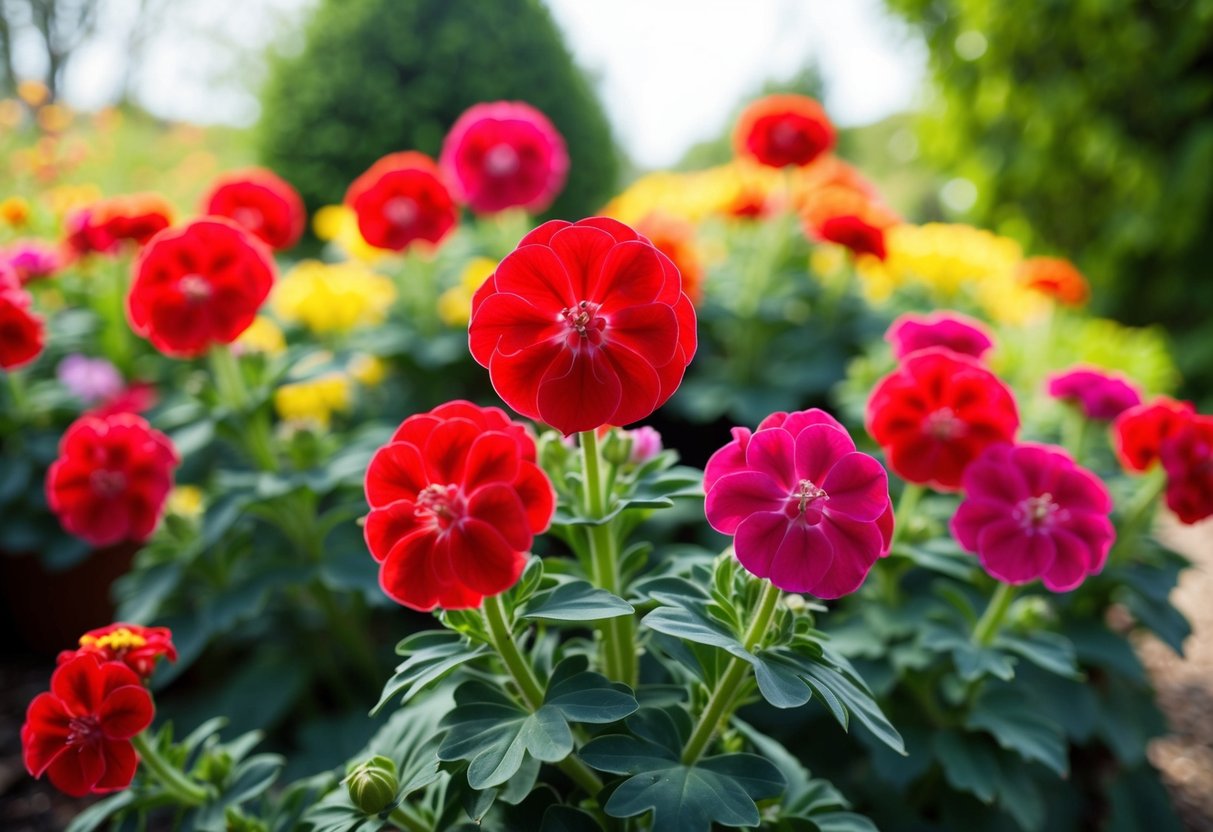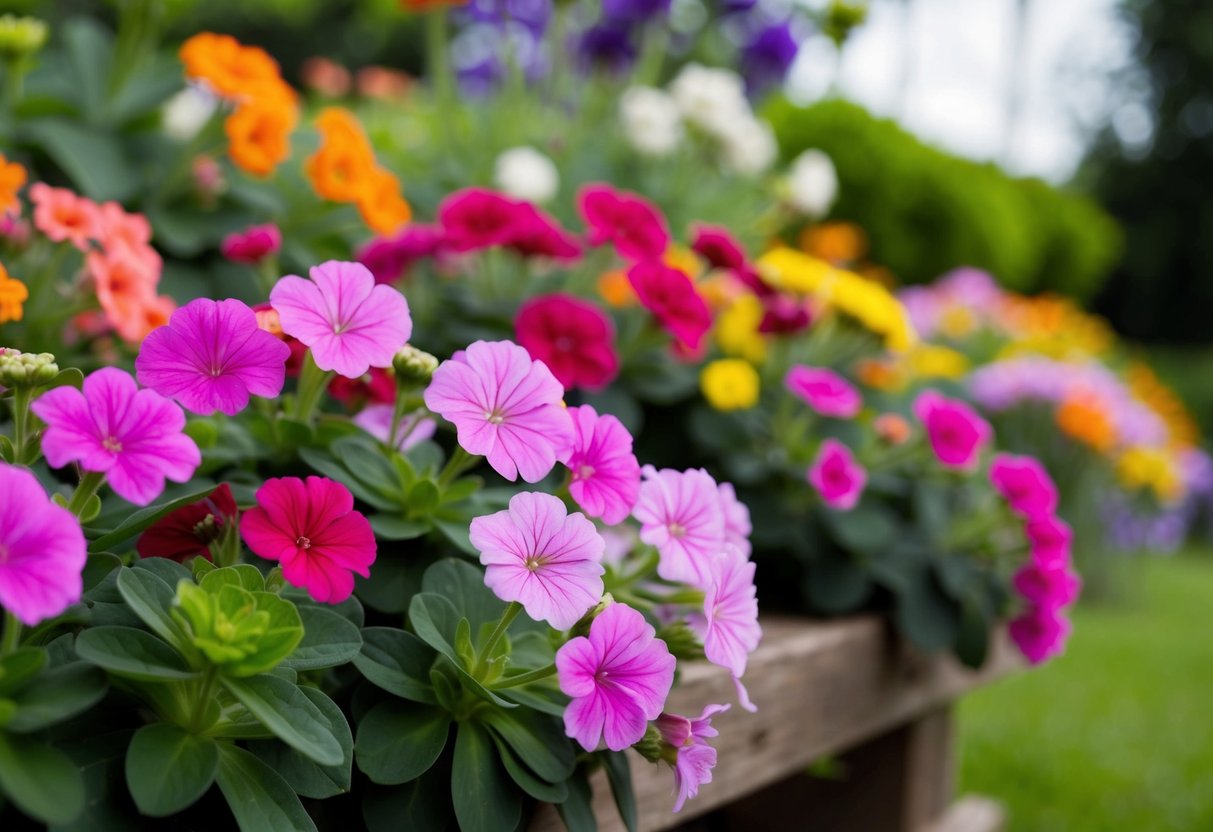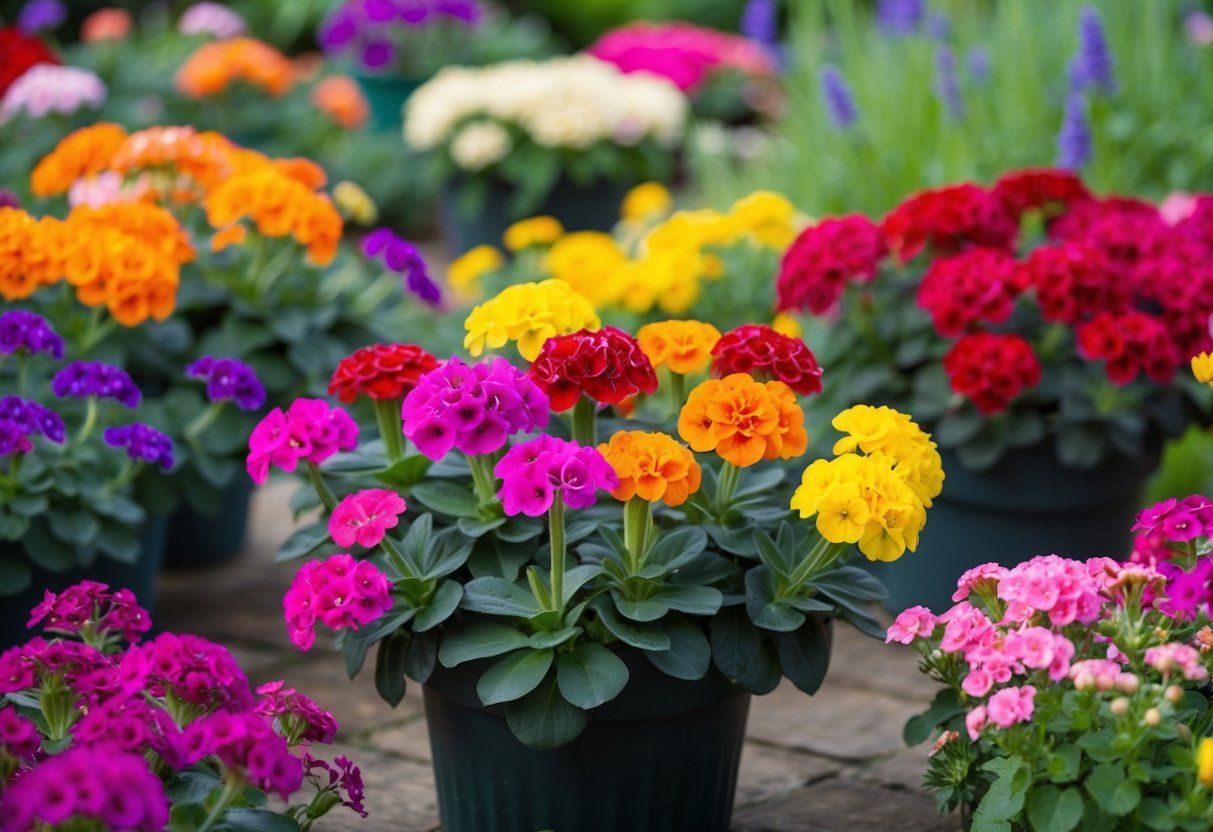Do Hardy Geraniums Come Back? Discover Their Resiliency
Are you curious about hardy geraniums and whether they make a reliable addition to your garden? Well, you’re in luck! Hardy geraniums, also known as cranesbill geraniums, are a fantastic choice if you’re looking for a plant that returns year after year. Yes, hardy geraniums do come back each year, making them a perfect low-maintenance perennial option for your garden. These herbaceous perennials are known for their resilience and ability to thrive in a variety of conditions.

Aside from their annual return, hardy geraniums boast vibrant blooms that can fill your garden with color. They work wonderfully as ground cover, filling those tricky nooks and crannies with ease.
With many varieties available, you can enjoy diverse hues and foliage designs ranging from simple greens to more intriguing patterns.
For those in colder areas, you may wonder how these plants fare through winter. Good news! Hardy geraniums are well-suited to withstand the chill, often bouncing back beautifully come springtime. Whether you’re an experienced gardener or a beginner, adding these dependable perennials can bring joy and a splash of color to your outdoor space.
Understanding Hardy Geraniums

Hardy geraniums are versatile perennials known for their beautiful blooms and resilience. They belong to the Geranium genus and are often referred to as cranesbill geraniums. With a variety of species and cultivars available, these plants can brighten up any garden.
Botanical Profile
Hardy geraniums are part of the Geraniaceae family. They are often called “true geraniums,” differentiating them from the more tender geraniums found in pots. The plants have deeply lobed leaves and bear five-petaled flowers in a range of colors.
Common species like Geranium sanguineum and Geranium maculatum offer vibrant pink and purple flowers. These plants typically thrive in hardiness zones 3-9 and require well-drained soil with moderate water. They are usually pest-resistant and can tolerate a variety of lighting conditions, from full sun to partial shade.
Popular Varieties and Their Features
There are many popular varieties of hardy geraniums. One well-loved variety is ‘Rozanne,’ known for its long-lasting purple blooms and sprawling habit. This cultivar often blooms from late spring to the first frost.
Another favorite is Geranium maculatum, often referred to as wild geranium, which grows well in woodlands and shady gardens.
Each variety has different care needs and aesthetic qualities. While ‘Rozanne’ thrives in sunny spots, other types may prefer more shade. Understanding the specific requirements of each variety or species helps you enjoy the best blooms and foliage your garden can offer. Check out more on planting and growing techniques at sites like Epic Gardening.
Growing and Planting Conditions

When growing hardy geraniums, it’s important to provide the right environment to ensure healthy blooms and resilient plants. These plants thrive with specific soil, sunlight, and watering conditions.
Soil Preferences
Hardy geraniums prefer well-drained soil. Ensure your planting site has soil that doesn’t retain water for long periods.
You can improve drainage by mixing in organic matter like compost. This also helps the soil retain enough moisture without becoming soggy.
Maintaining an ideal soil pH of around 6.0 to 7.0 is beneficial. Test your soil and adjust it if necessary.
If your soil type is heavy clay, consider raising the bed or using containers. Fertilize lightly with a balanced product to encourage blooms and growth.
Sunlight Needs
Position your hardy geraniums in a spot with full sun to partial shade. More sunlight often results in more vibrant flowers, so aim for full sun exposure when possible.
However, if you live in a climate with extremely hot summers, providing partial shade during the hottest part of the day can protect your plants from scorching.
Morning sunlight is particularly beneficial. If you’re managing a garden in temperate regions, a balance of sunlight and shade helps the plants thrive without stress from too much heat.
Watering and Climate Adaptation
Regular watering is key for healthy geranium growth, but the plants are also somewhat adaptable to drought conditions. Ensure the top inch of soil is dry before watering again.
Over-watering can lead to root rot, so it’s essential to strike a balance.
In temperate regions, hardy geraniums adapt well and can thrive in diverse climates. Using mulching can help keep the soil moist and cool, reducing the need for frequent watering.
In extreme conditions, consider adjusting the watering schedule to better suit the local climate.
Year-Round Care and Maintenance

Taking care of hardy geraniums year-round ensures that they remain healthy and bloom beautifully. Key aspects include pruning, managing pests and diseases, and dividing the plants to promote growth.
Seasonal Pruning and Deadheading
Pruning and deadheading are essential for keeping your hardy geraniums thriving. Regularly cut back faded flowers to encourage more blooms and prevent disease.
Typically, this involves gently pinching or cutting off spent flowers. It’s a good idea to trim the plant to keep it compact and tidy.
In early spring, cut back any dead or damaged leaves. This allows for fresh growth to emerge.
During fall, a more significant pruning helps the plant prepare for the colder months. When you notice your geranium not flowering, deadheading might help restore its blooming potential.
Dealing With Pests and Diseases
Geraniums can face issues with pests like slugs and diseases such as mildew. To prevent slugs, use barriers or traps around your plants.
Inspect your geraniums regularly for signs of pests and damage, and consider organic pesticides if needed.
For diseases, ensure proper spacing and airflow among plants. If you spot mildew, remove affected foliage and improve air circulation around the plant.
Keeping the area clean and removing debris can also prevent problems. Regularly check for any signs of distress in your plants to address issues early.
Division for Plant Health and Expansion
Dividing your hardy geraniums can help renewal and expansion of the plant. This process involves separating the root ball into smaller sections to plant elsewhere.
It’s best done in spring or early fall when the plant is not in full bloom.
Use a sharp shovel or knife to carefully cut through the root ball. Replant each section, ensuring the crown remains level with the soil.
Dividing helps maintain healthy growth and can even be a solution if your geranium maderense is experiencing poor health or overcrowding. This practice not only keeps your garden vibrant but also provides new plants for other areas.
The Beauty of Blossoms

When you add hardy geraniums to your garden, you’re in for a treat. These plants not only offer vibrant colors but also attract a variety of pollinators. Their lush foliage and long bloom time can brighten up any space, creating a lively and inviting atmosphere.
Exploring Flower Colors and Bloom Time
Hardy geraniums come in a wide array of flower colors, making them perfect for adding diversity to your garden. From soft pink flowers to deep purples, the range in hues can suit any garden style.
During the spring, these geraniums start their flowering season, providing long-flowering displays that can steal the show in your flower beds.
The bloom time of hardy geraniums is one of their best features. They often have long bloom times, even offering a second flush of flowers later in the season. This re-bloom capability means you’ll enjoy their beauty for longer, contrasting nicely with the rest of your garden’s lush foliage.
Attracting Pollinators With Vibrant Geraniums
Having hardy geraniums in your garden not only benefits you but also the environment. These plants are excellent for attracting pollinators like bees and butterflies. Their vibrant colors and abundant blossoms serve as beacons for these important creatures.
In addition to attracting pollinators, geraniums are deer-resistant, so you won’t have to worry about them becoming snacks for wandering deer.
By planting these flowers, you provide an essential habitat for pollinators and enjoy the sight of butterflies flitting from bloom to bloom throughout the flowering season. This combination of beauty and function makes hardy geraniums an excellent choice for any gardener looking to enhance their outdoor space.
Designing Your Garden With Hardy Geraniums

Hardy geraniums are versatile plants that fit well in various garden designs. They’re perfect for adding color and structure to your garden, and they pair well with other plants for a harmonized look.
Landscaping Uses and Complementary Plants
Hardy geraniums are a great choice for many landscaping styles, such as a cottage garden or a rock garden. The sprawling foliage provides excellent ground cover, making them ideal for filling in spaces between larger plants.
If you’re looking to create a lush border, consider planting hardy geraniums as an edging plant or in part shade areas. They thrive in hardiness zones 5 through 8, which makes them a reliable choice in many climates.
For a cohesive garden look, try pairing hardy geraniums with green foliage plants or complementary flowers.
Options like hostas and ferns work well in shaded spots, while zonal geraniums and roses can add contrasting height and texture. You’ll find that mixing these plants creates a balanced and visually appealing garden. For tips and inspiration, exploring resources from the Royal Horticultural Society can be helpful.
Creating Themes With Different Geranium Varieties
When planning your garden theme, take advantage of the various geranium varieties available. Different colors and sizes allow you to create unique motifs. You can aim for a monochromatic look or an array of hues. The perennial geranium, especially Geranium macrorrhizum, is known for its easy-to-grow and low-maintenance nature, making it perfect for themed settings like a cottage garden.
Try grouping different colors of hardy geraniums to create vibrant patterns. If you want a more subdued look, choose a single flower color and mix in plants with varied textures and leaf shapes. With so many options, you’re bound to find something that fits your garden plants perfectly. You can easily buy hardy geraniums at garden centers or online nurseries.







